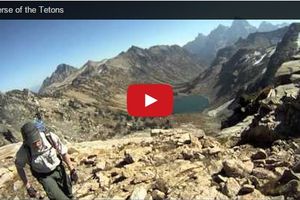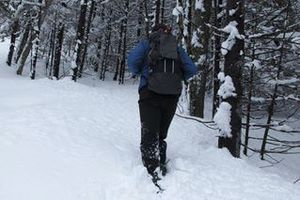![How Footwear Affects the Way We Move [Part 3 in The Case For Minimalist Footwear] How Footwear Affects the Way We Move [Part 3 in The Case For Minimalist Footwear]](/media/cache/e9/10/e91020b61863520b78dcba02657f0c30.jpg)
At first I started just walking around the house in bare feet, focusing on technique. It was almost like learning to walk again; consciously landing on my forefoot required focus and the usage of muscles that were very underdeveloped. I felt awkward, clumsy, and my feet and calves began to hurt. The difference this time was that the pain felt different - it kind of felt good. From my years of weight lifting experience I knew that kind of pain meant muscle building, not injury. I felt encouraged and I hoped that as my feet got stronger I would start to see results.

This October I will be helping instruct a course on expedition planning through the Backpacking Light Wilderness Trekking School. The course will include a three week online study portion followed by one week trek in the field.
![How We Move [Part 2 in The Case for Minimalist Footwear] How We Move [Part 2 in The Case for Minimalist Footwear]](/media/cache/5b/65/5b6587e276fdd0d55caa378417b85710.jpg)
When I first started to investigate the possible options for my foot, knee, and back problems I approached it from the standpoint that my body was flawed and I needed a solution to compensate. I looked at shoes, orthotics, knee wraps, and anything else that I could find. As I began to familiarize myself with products, something struck me about how many of them were marketed: they were being billed as natural, ergonomic, and bio-mechanical technologies to support and strengthen the feet and legs as if one were barefoot.
![My Journey to Discovery [Part 1 in The Case for Minimalist Footwear] My Journey to Discovery [Part 1 in The Case for Minimalist Footwear]](/media/cache/84/a9/84a93e651b80e96a4b2d8f3afa6ee055.jpg)
I have always loved physical activity, especially when it involves being in the outdoors. During the years that I attended University, it was built-in to my daily life. I worked out, I ran, I hiked, I rock climbed, and when I wasn't riding my mountain bike, I walked everywhere - no matter what the weather or season. My primary source of transportation was human powered, in the beginning by necessity, and after I got a car, mostly by choice.

If you are new to the barefooting movement, you have probably discovered that people generally fall into one of two camps: those who are proponents of being mostly barefoot, and those who predominantly wear some form of minimalist footwear. You may also be aware that just recently a study was published which found that for reducing the impact of running, barefoot is best.
![How Footwear Affects the Way We Move [Part 3 in The Case For Minimalist Footwear] How Footwear Affects the Way We Move [Part 3 in The Case For Minimalist Footwear]](/media/cache/e9/10/e91020b61863520b78dcba02657f0c30.jpg)


![How We Move [Part 2 in The Case for Minimalist Footwear] How We Move [Part 2 in The Case for Minimalist Footwear]](/media/cache/5b/65/5b6587e276fdd0d55caa378417b85710.jpg)
![My Journey to Discovery [Part 1 in The Case for Minimalist Footwear] My Journey to Discovery [Part 1 in The Case for Minimalist Footwear]](/media/cache/84/a9/84a93e651b80e96a4b2d8f3afa6ee055.jpg)
